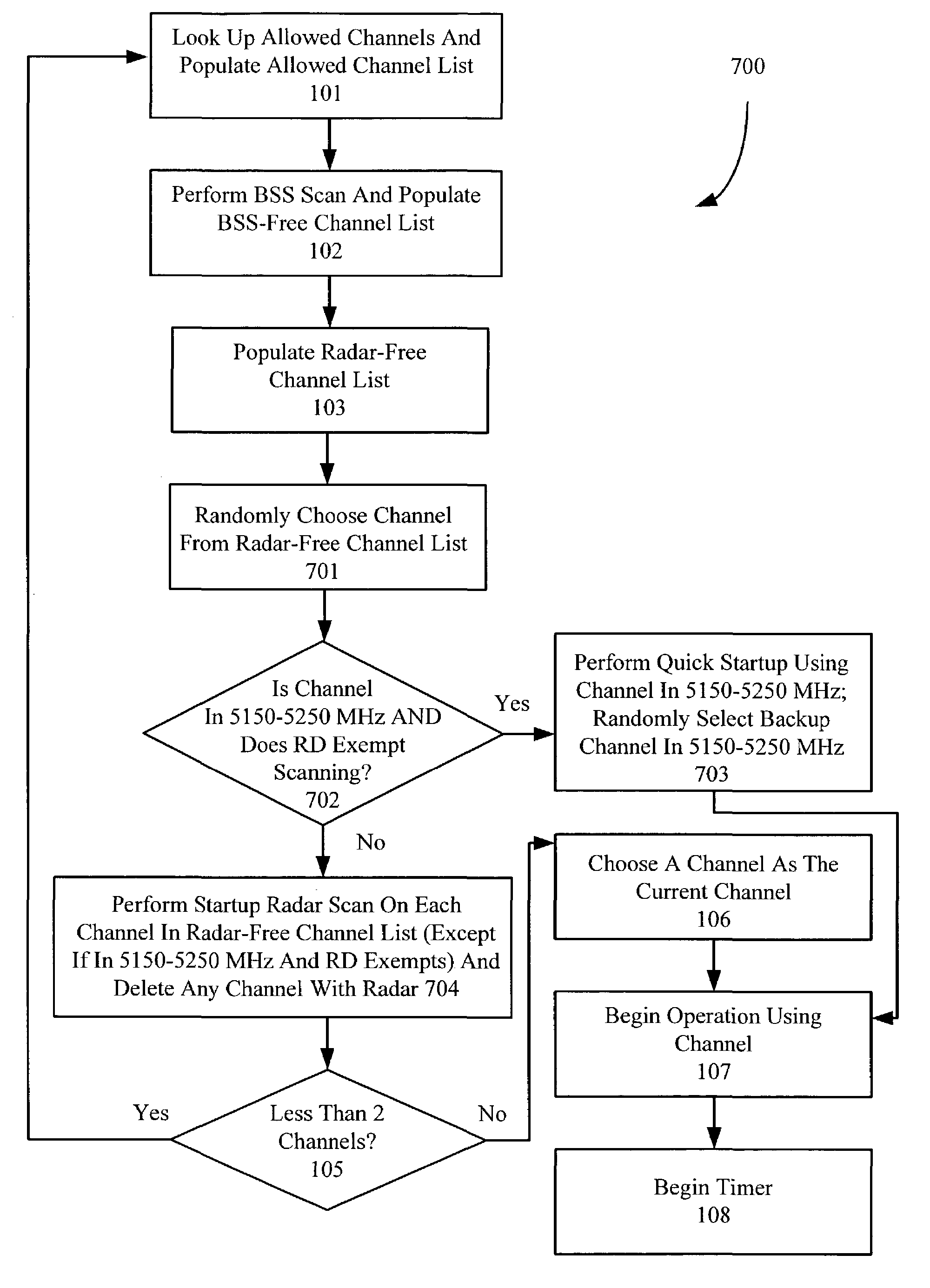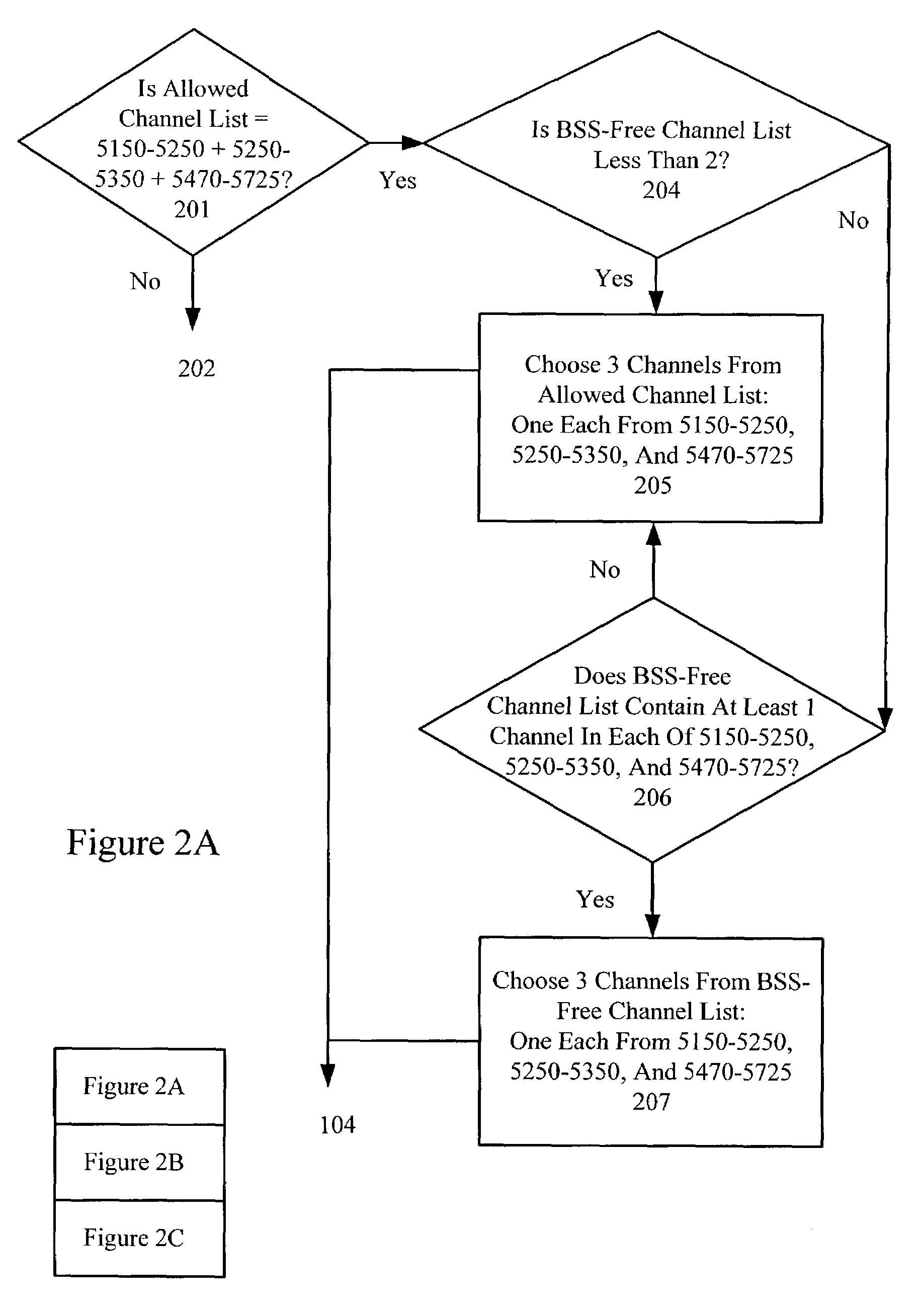Methods for implementing a dynamic frequency selection (DFS) feature for WLAN devices
a technology of dynamic frequency selection and wlan, which is applied in the field of wireless local area network (wlan) devices, can solve the problems of reducing the usability and availability of a wireless network, affecting the service life of the wireless device, and requiring a long startup routine. achieve the effect of minimizing network startup delays and disruption to users and efficient switching channels
- Summary
- Abstract
- Description
- Claims
- Application Information
AI Technical Summary
Benefits of technology
Problems solved by technology
Method used
Image
Examples
Embodiment Construction
[0082]Although illustrative embodiments have been described in detail herein with reference to the accompanying figures, it is to be understood that the invention is not limited to those precise embodiments. They are not intended to be exhaustive or to limit the invention to the precise forms disclosed. As such, many modifications and variations will be apparent to practitioners skilled in this art.
[0083]For example, the scan times associated with the access point and the stations are illustrative only and not limiting. Other embodiments of the invention can include different, i.e. longer or shorter, scan times depending on device, system, and / or political considerations. Specifically, although DFS has been described in detail in reference to European regulations, other countries may soon promulgate rules regarding DFS. For example, certain organizations, such as the International Telecommunications Union (which currently includes 144 member countries worldwide) are working on a glo...
PUM
 Login to View More
Login to View More Abstract
Description
Claims
Application Information
 Login to View More
Login to View More - R&D
- Intellectual Property
- Life Sciences
- Materials
- Tech Scout
- Unparalleled Data Quality
- Higher Quality Content
- 60% Fewer Hallucinations
Browse by: Latest US Patents, China's latest patents, Technical Efficacy Thesaurus, Application Domain, Technology Topic, Popular Technical Reports.
© 2025 PatSnap. All rights reserved.Legal|Privacy policy|Modern Slavery Act Transparency Statement|Sitemap|About US| Contact US: help@patsnap.com



